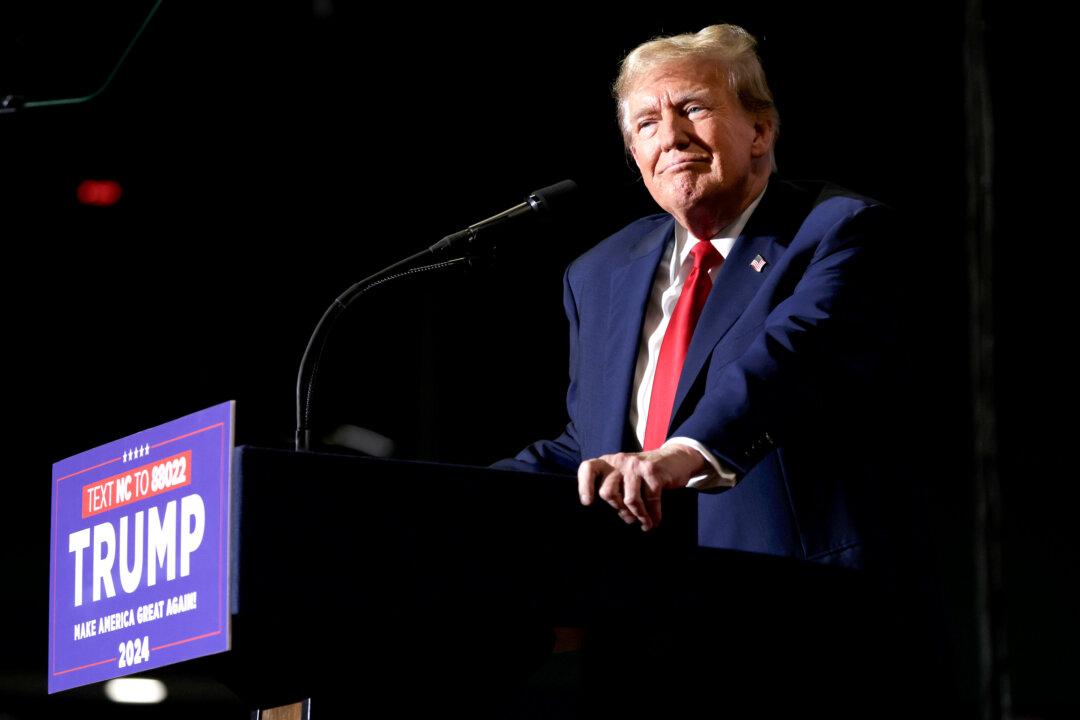The Supreme Court ruled on March 4 that former President Donald Trump can’t be removed from the ballot by individual states, overturning the Colorado Supreme Court decision that found him ineligible as a candidate and disqualified from the state ballot under Section 3 of the 14th Amendment.
The order was issued just one day before more than a dozen states were to hold their primary elections.
Supreme Court Defers to Congress
The Supreme Court ruled that states can’t enforce Section 3 for national candidates but that “the Constitution empowers Congress to prescribe how those determinations should be made.”Section 5 of the 14th Amendment spells out Congress’s authority to pass legislation to enforce the amendment, and the court opined that this “power is critical when it comes to Section 3.”
States may only enforce Section 3 when it comes to state office, the opinion reads, in line with how states have historically used the statute.
The court noted a distinct lack of historical precedent in which states used the statute to disqualify national candidates.
“As an initial matter, not even the respondents contend that the Constitution authorizes States to somehow remove sitting federal officeholders who may be violating Section 3,” the opinion reads, noting that this sort of power would “flout” constitutional principles.
The justices found that the text of Section 3 itself reinforces this reading, as it allows Congress to “remove” a Section 3 “disability” through a two-thirds vote.
“The text imposes no limits on that power, and Congress may exercise it any time,” the opinion reads.
In a footnote, the court cited cases in which Congress voted to remove this disability for members of Congress after the candidates had been elected.
Justice Amy Coney Barrett wrote a separate, concurring opinion that primarily stressed the unanimity of the court.
“The Court has settled a politically charged issue in the volatile season of a Presidential election,” she wrote. “Particularly in this circumstance, writings on the Court should turn the national temperature down, not up. For present purposes, our differences are far less important than our unanimity: All nine Justices agree on the outcome of this case. That is the message Americans should take home.”
However, Justice Coney Barrett took issue with the part of the order that opined on the role of federal legislation in enforcing Section 3.
Justices Sonia Sotomayor, Elena Kagan, and Ketanji Brown Jackson likewise took issue with opining on federal legislation.
The three justices wrote another concurring opinion that even though all nine members agreed Colorado couldn’t enforce Section 3, the opinion should have ended there.
“The majority is left with next to no support for its requirement that a Section 3 disqualification can occur only pursuant to legislation enacted for that purpose,” the opinion reads.
Section 3 Challenges
The Supreme Court found that a “state-by-state resolution” of these cases “raises heightened concerns,” because it would unlikely “yield a uniform answer consistent with the basic principle that “the President ... represent[s] all the voters in the Nation.”States each have their own, varied election laws, and some allow for procedures to bring a disqualification challenge while others don’t.
“The disruption would be all the more acute—and could nullify the votes of millions and change the election result—if Section 3 enforcement were attempted after the Nation has voted,” the opinion reads. “Nothing in the Constitution requires that we endure such chaos—arriving at any time or different times, up to and perhaps beyond the Inauguration.”
In mid-February, Trump attorneys reported 88 challenges to President Trump’s eligibility in 45 states under the Civil War-era statute.
Besides the Colorado Supreme Court, the Maine secretary of state and an Illinois judge had also ruled President Trump ineligible after finding that he engaged in an alleged “insurrection” for his actions on Jan. 6, 2021. All three disqualifications had been stayed pending a higher court ruling, and no state has actually removed President Trump from any ballot to date.
Attorney Jason Murray, representing six Colorado voters, argued that Section 3 and Colorado state law together allowed the state to disqualify President Trump as a candidate and urged the Supreme Court to affirm Colorado’s findings for all states.
The Supreme Court opinion had been greatly anticipated by many lower courts that held off determining the dozens of ballot challenges filed across nearly every state. Almost half a hundred amicus briefs were filed by officials, lawmakers, legal experts, and voters in the days leading up to oral arguments.
Section 3 of the 14th Amendment was originally written to prevent deserters who left office to join the Confederacy from returning to their posts. It stipulated that those who had taken an oath of office and later engaged in “insurrection” or “rebellions” couldn’t hold office without a two-thirds vote from Congress removing the disability.
Colorado Disqualification
The Colorado case was brought last summer, and under the state’s election code, it was meant to be heard immediately. However, a district court judge delayed the case for about two months before holding a week-long trial.Plaintiffs presented witness and expert testimony and a record based largely on the controversial Jan. 6 House Select Committee report. The original defendant of the case was Colorado Secretary of State Jena Griswold, who took no official position but later stated that she personally believed that President Trump engaged in “insurrection” and urged the Supreme Court to affirm his disqualification.
The trial court judge hadn’t disqualified President Trump. Issuing a surprise ruling that determined President Trump had engaged in “insurrection,” the judge ruled that Section 3 didn’t apply to presidents and ordered the secretary of state to add him to the state’s primary ballot.
The plaintiffs and attorneys for President Trump appealed the case, and the Colorado Supreme Court affirmed the “insurrection” finding but reversed the lower court order, ordering the state secretary to remove him from the ballot if the case wasn’t appealed to the U.S. Supreme Court by Jan. 5.
The Colorado GOP, an intervenor in the original case, appealed in short order and the removal was effectively stayed. President Trump appealed as well, and the Supreme Court opted to hear the simpler question his attorneys posed: whether the Colorado Supreme Court erred in its order to remove President Trump as a candidate.







